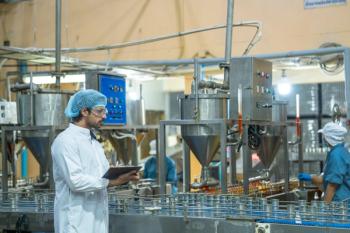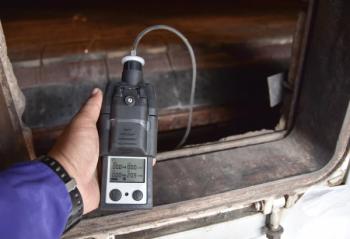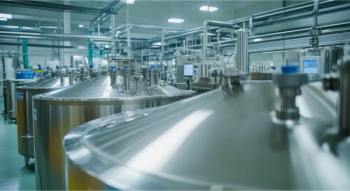
Sulfuric Compound Metabolites Characterized Using Surface-Enhanced Raman Spectroscopy
Pakistani scientists recently used surface-enhanced Raman spectroscopy (SERS) to characterize the metabolites of sulfuric compounds.
In a study led by scientists from the University of Agriculture Faisalabad and the Pakistan Institute of Engineering and Applied Scientists in Faisalabad, Pakistan, surface-enhanced Raman spectroscopy (SERS) was used to characterize dibenzothiophene metabolites. Their findings were published in Spectrochimica Acta Part A: Molecular and Biomolecular Spectroscopy (1).
Sulfur is the 3rd most abundant element in petroleum, often ranging from 0.03–7.89% by weight. When sulfur oxides are released upon fossil fuel combustion, this can cause adverse environmental effects, such as acid rain. Additionally, sulfur dioxide is a highly toxic gas, which can kill plants, deteriorate limestone buildings, and cause respiratory health problems. As of 2020, man-made sources in the United States emit approximately 1.8 million short tons of sulfur dioxide per year (2) Upon long-term exposure to sulfur dioxide, respiratory symptoms can increase and reduce lung capacity, while also causing bronchitis and conjunctival inflammation.
According to the scientists, this issue can be handled by eliminating sulfur moieties from heterocycle organo-sulfur compounds present in the petrol, like dibenzothiophene (DBT). Dibenzothiophene is a polycyclic aromatic organic sulfur compound that is present in fossil fuels such as petroleum and coal. For this study, the scientists tested the desulfurizing activity of Tsukamurella paurometabola, a bacterial strain that can desulfurize DBT under mild conditions via highly selective cleavage of C–S bonds by following a 4S-pathway.
This testing was done via SERS, which is an ultrasensitive detection method that provides for active sites by keeping metallic nanoparticles in proximity to the analyte to enhance the surface plasmon effect; resulting in Raman signal enhancements up to 108-fold to analyze molecules present. Using SERS, the scientists estimated the desulfurizing activity of bacteria at extremely low concentrations by characterizing metabolites of dibenzothiophene biodesulfurization in a sample of bacterial supernatants obtained by solvent extraction methods.
The most prominent SERS peaks observed at 791, 837, 944 and 1032 cm−1, associated to C–S stretching, are solely observed in dibenzothiophene and its metabolite-I (DBTS). However, these peaks are absent in 2-Hydroxybiphenyl (metabolite-II) and the extraction sample of supernatant, which is a byproduct of biodesulfurization. Moreover, the SERS peaks observed at 974 (the characteristic peak of benzene rings) and 1015 cm −1 are associated to C–C ring breathing, while 1642 and 1655 cm−1 rings are assigned to CC bonds of the aromatic ring.
These peaks were only observed in 2-Hydroxybiphenyl (metabolite-II) and in the extraction sample of supernatant because of biodesulfurization. They were absent in dibenzothiophene and its metabolite-I; this indicates that the aromatic ring is carrying sulfur in this fraction. Multivariate data analytical tools like principal component analysis (PCA) and PCA-loadings are applied to further differentiate between dibenzothiophene and its metabolites, dibenzothiophene sulphone (metabolite-I) and 2-hydroxybiphenyl (metabolite-II).
References
(1) Habiba, U. E.; Anwer, A.; Hussain, M. U.; Majeed, M. I.; Alwadie, N.; et al. Surface Enhanced Raman Spectroscopy for the Characterization of the Metabolites of the Biodesulfurization of Dibenzothiophene Carried Out by Tsukamurella Paurometabola. Spectrochim. Acta Part A: Mol. Biomol. Spectrosc. 2024, 313, 124126. DOI:
(2) Sulfur Dioxide. American Lung Association 2024.
Newsletter
Get essential updates on the latest spectroscopy technologies, regulatory standards, and best practices—subscribe today to Spectroscopy.





